The most important element of the decor, curtains with lambrequin, tightly entered the life of citizens. Recently, they were used only in government agencies or in solemn halls, today it is a decoration of private houses and apartments. Of course, the design with them acquires a different meaning, the room becomes special.
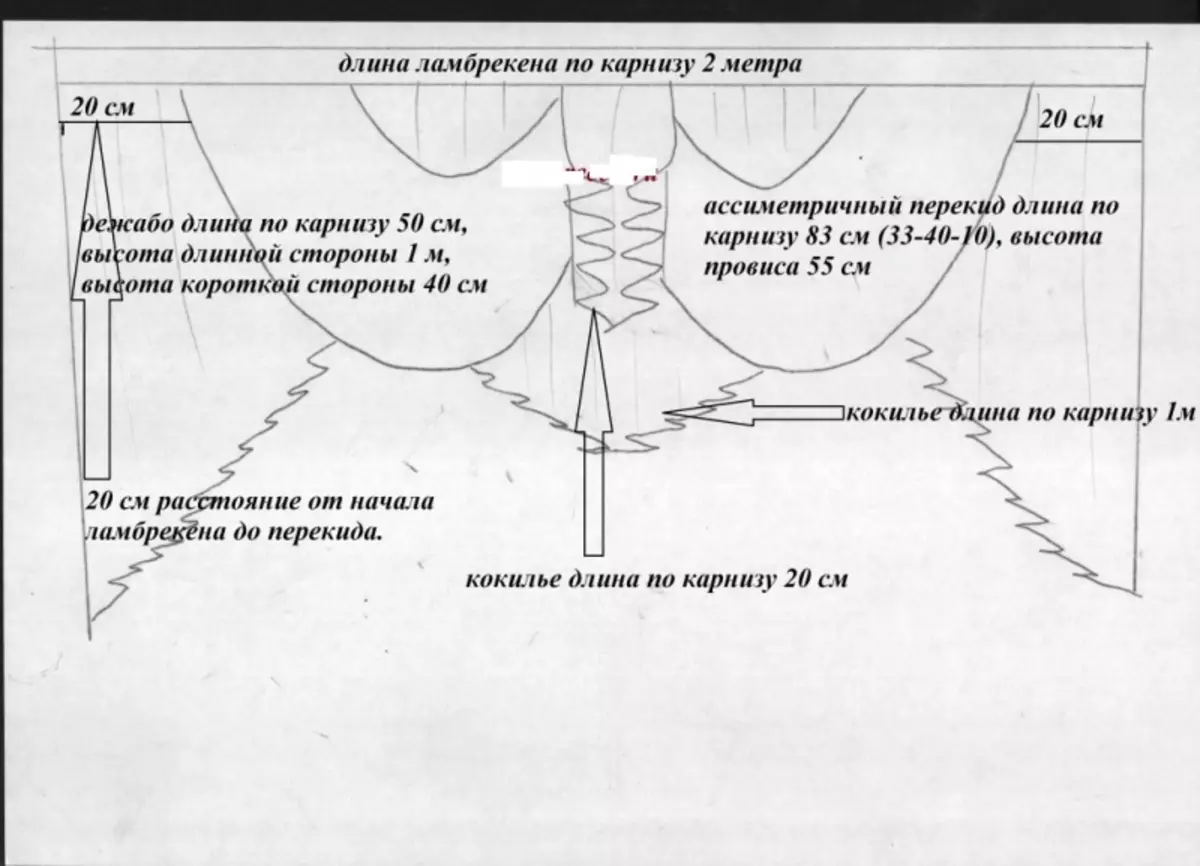
Scheme of sewing lambrequins.
This type of curtain is different in its design, they are pretty difficult to not only choose, but also sew.
The main rule in the creation process is to choose the pattern and accurately follow the instructions (the slightest deviation from the specified sizes will spoil the project).
Before starting to work, learn the types of models.
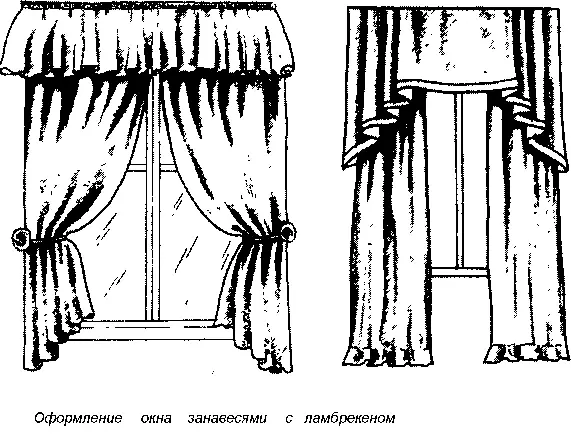
Window design with lambrequin.
The history of the development of decorative decorations on the windows does not stand still, in our time allocate:
- Arched elements with border or braid.
- Wave-shaped curtains.
- Curtal curtains.
- Royal.
- With Zabo.
- With folds (smooth or cylindrical).
- With ribbons, assemblies.
It is recommended to do the lambrequins from heavy fabric - so they will look at volumetric. Often curtains with them sew from one material. Before moving to the process consideration, we list the types of folds:
- Unilateral. In this case, all the folds look in one direction.
- Counter. Folds are distributed across the width, directed to each other.
- Bowls. Folds fix towards each other on the back.
Scheme of sewing curtains: make the pattern and make the calculation of the material
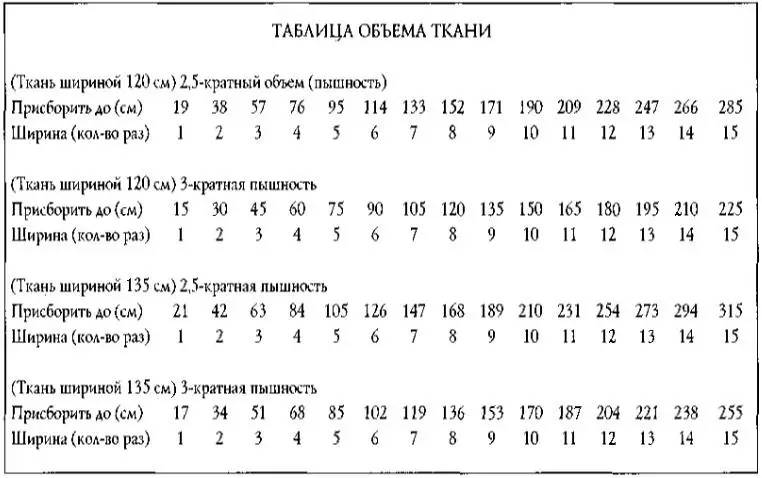
Table of tissue volume.
To independently make a lambrequin, you will need:
- The cloth.
- Tailor
- Lining.
- Chalk or pencil.
- Tape (drapery and with fringe).
- Dense paper (on it draw the template).
- Pins.
- Paper for pattern.
- Additional fabric for Kant.
- Threads.
- Iron.
Article on the topic: How to decorate the ceiling with your own hands: stucco, painting, photo wallpaper
First you need to calculate and place the fabric. Consider the model of curtains with counter folds. On the cutting cut, mark the middle, the pattern is done simultaneously on two parts, make the width of the folds arbitrary, standard size - 5-15 cm. Mark this distance, it should be the same. The number of folds is multiple, that is, on each part of the tissue is the same.
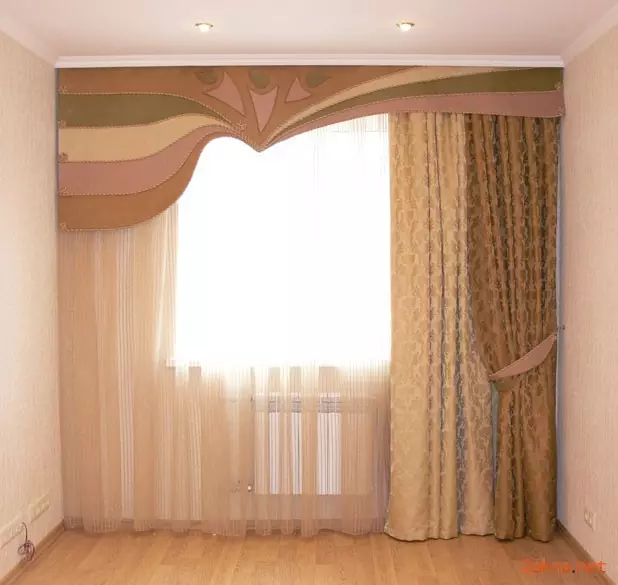
It is believed that the lambrequins from heavy tissue look at volumetric.
All sizes are taking into account the size of the cornice. For example, the distance of the eaves of 3.4 m, the folds are 0.07 m in depth. So you need to see about 8.00 m tissue, the more folds, the greater the cut. To calculate the amount of material you need from the total length, take the length of the existing eaves (for example, 8.00-3,4 = 4.6). Also, do not forget to leave 4 cm per chandency (4,60-0.04 = 4.56 m, according to our calculations, it turns out that 4.6 m is a fabric on folds).
To determine the number of folds, divide the fabric to the depth of one element (in our case 4.56 / 0.07 = 65 pcs., But since the quantity should be multiple, we get 64). After rounding, the depth will have to adjust, now the fabric is divided into the number of folds, we get 7.1 cm. The schemes of sewing lambrequins are simple, but all calculations need to be performed exactly, otherwise the curtains will be oblique and untidy.
Further sewing of the lambrequins. Continue the markup of the distance between the folds. It is two times less than the number of folds. If you have 64 of them, then the number of distances is 32. Fix the folds and scratch them. Tailoring of unilateral lambrequins - the process is simple, you can even completely do without grimits.
Creating lambrequins with a weaving fold
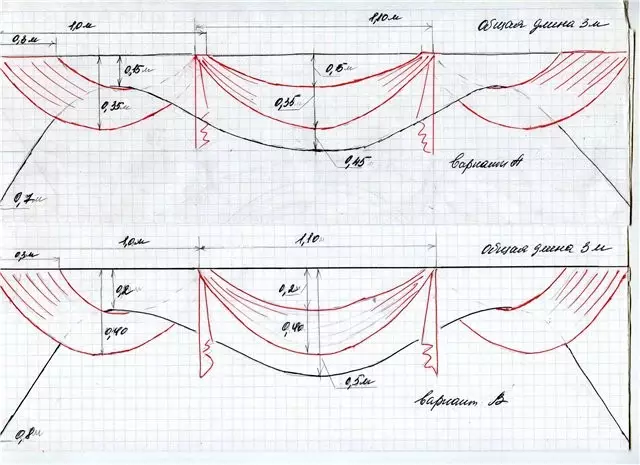
Scheme of lambrequins with a wearing fold.
For a more convenient calculation of the lambrequin with a weaving collar, use the table below. Consider the process algorithm on the example. Imagine that we have a piece of fabric in 800 cm, we look at the seventh string, the third column (T = 800). Suppose the length of the eaves and the estimated width of the curtains is 300 cm, this y = 300 (fourth column, line seven). We calculate the coefficient of the bow according to the formula N = T / Y (the first column, the seventh line), we obtain n = 2.67.
Article on the topic: crafts from vegetables and fruits with their own hands (31 photos)
Next, specify the width of the edge liner, see the seventh string (you are oriented by the selected line) of the sixth column, we obtain E = 1.5. Set the width of the bend of the side edge under the braid. Look at the seventh column of the seventh string, get f = 8. The width of the bow is obtained equal to 8 cm (this is "A"; the eighth column, the seventh line). Presuming distance from the beginning of the first bow to the edge of the curtains is the eleventh column, the seventh line. The recommended value is from 8 cm.
Then you need to decide on the number of bunk folds. We look into the table, in our case, the same seventh line, but already the tenth column, K = 29. The method of selection finds the number of bows, as a result, the difference between the existing number of tissue and the required (fifteenth column) should not have a negative value.
Next block of operations:
- "B" is the gap between the bows. Column number 9 (for our example, we look at the line 7). B = 1.7.
- "C" is the distance from the edge to the first bow. Column number 12 (in our case - 10.2).
- "L" is the width of the curtains with sides under the bracket. Column number 4 (we have 828 cm).
- "M" - a member for a bow. Column number 3 (786 cm).
- Check quantity. Column number 15. P = T-M, we have (on line No. 7) p = 14 cm. Because The resulting number does not have a negative value, the number of bows picked up we are correct.
Tailoring of Lambrekenov: Creating a Tie
Creating a tie for lambrequin is a simple matter. In place of the cut, draw a trapezium, its parallel sides are the length of the tie, the width is two others. For example, the dimensions of the future building can be 30 and 45 cm. The tie width is selected individually, the rule here is one thing - the tie should be more than 20 percent.Article on the topic: Hard lambrequen from two fabrics: how to sew a dense lambrene with their own hands?
Simplest option: Element without seams
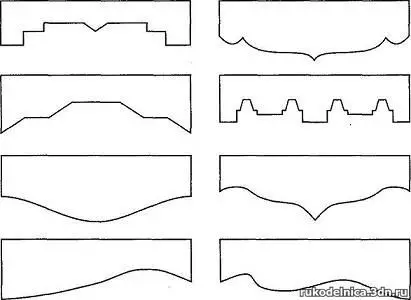
Smooth lambrequin scheme.
To create a model without seams, you will need:
- Material.
- Two pins on the clasp.
- Set of standard sewing pins.
- Two vintage clips.
The main formula here is this: the windows width + Gardin width x 2 + the depth of the lambrene - the width of the required material is obtained. Instruction: Initially, the fabric and lining is cut, they have the same dimensions. Excellence with 3 cm. Connect the elements with special tissue glue.
Installation is carried out at six steps:
- Tick the center of the center.
- Print element to camp pin.
- Distribute matter according to curtains, and after the pins on the clasp, the mount should be as close as possible to the wall.
- The fabric will hang from Gardina. Collect it with medium pins.
- Secure clipses on pins.
- Removing the central pin, secure the cloth in this place already a decorative clip.
Lambrequins are a popular designer solution, these elements are suitable in the interior of almost any style. Depending on your fantasy, existing fabric and accessories, you can create a unique appearance of the window. Their tailoring does not require particularly large material and temporary costs.
